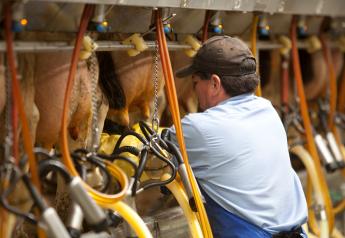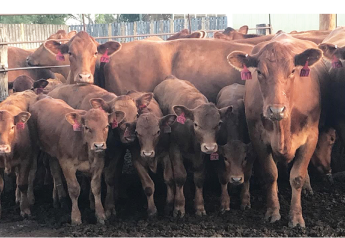Vet Diagnostic Center benefits Nebraska Students

By Deann Gayman - University Communication
After the Nebraska Veterinary Diagnostic Center opened at the University of Nebraska-Lincoln in June 2017, its presence immediately benefited the state’s animal producers with cutting-edge technology for quick diagnosis of diseases that have the potential to wipe out entire herds and livelihoods.
Soon after, students in the Professional Program in Veterinary Medicine also felt the advantages of the center. It offers a state-of-the-art classroom and laboratory and has become their home base for learning.
“We’re in class 8 a.m. to 4 p.m. everyday,” said Tina Novak, a second-year veterinary medicine student. “It’s a benefit to have this dedicated space.”
The center, which will be toured on Facebook Live on March 1, was built to provide the best disease diagnosis, research and student facilities. The classroom offers students a quiet space to study 24 hours a day with Ncard access. It also connects via large video screens and software to classrooms at Iowa State University to offer a broader range of classes. Nebraska partners with Iowa State to offer the veterinary medicine program, in which Huskers study two years in Lincoln before finishing the last two years in Ames, Iowa.
“Everything is in one place,” said Dominic Gentile, a second-year student. “With the lab specifically, everything is at our disposal, including computers, lab coats. It’s very modern with the newest technology.”
The student laboratory, where students do microbiology and parasitology lab work, benefits the students with its close proximity the diagnostic center.
“We have a few teachers who work in the center and they bring some of the more unusual real-world cases into the classroom,” Novak said. “We’ve done necropsies on some of these animals to solve the puzzle of how it died.”
Both Novak and Gentile are thankful for the opportunity the Nebraska-Iowa State partnership provides and for the new facilities on East Campus.
“It’s nice to be in a modern space having all the different technology available to us,” Gentile said. “It’s set up for learning in a comfortable environment.”
Novak said the new facility, when combined with the smaller class sizes and lower tuition of the first two years of the veterinary professional program, will help the state keep its best and brightest as working veterinarians in Nebraska.
The center was approved by the 2012 Nebraska Legislature, with state funds covering $40.6 million of the total $44.7 million project. The remaining $4.1 million was raised via private donations.
The center is virtually opening its doors at noon March 1 with a guided tour through the entire facility on the University of Nebraska-Lincoln's Facebook page.







